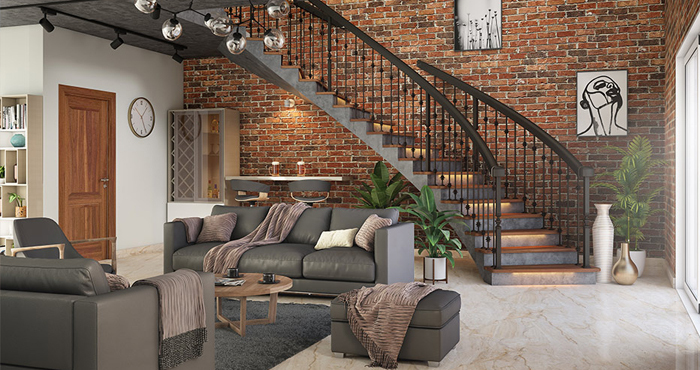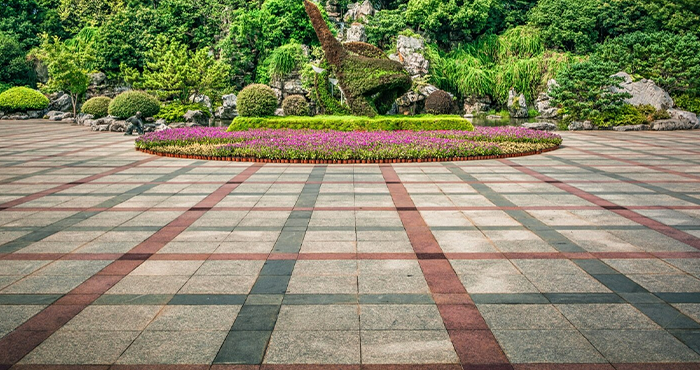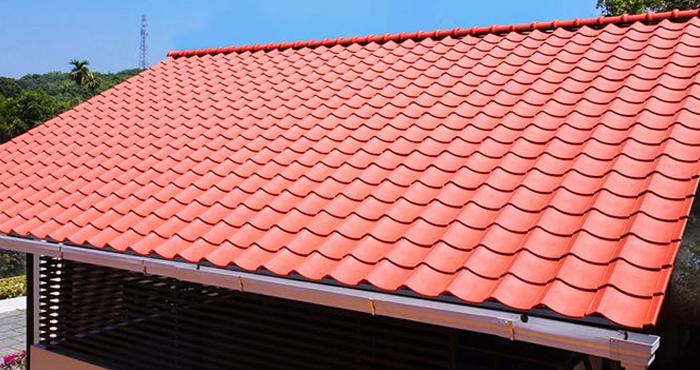Facing bricks, as the name implies, are manufactured to use as the exterior of the wall. These bricks are different from other structural brickwork as their primary use is to make the look of the building aesthetic. Facing bricks are made up of different kinds of materials.
This guide explains everything you need to know about facing bricks including their colours, textures, advantages, etc. Continue reading to know more.
Clay Face Bricks
Clay facing bricks are used in the construction of facades. In other words, they are used to build the principal ‘front’ of the building. Facing bricks are manufactured to be visible and thus offered in aesthetic and pleasing designs in the market. Apart from aesthetic designs and appealing look, facing bricks also possess many other great qualities discussed further in the blog.
Face brick has much higher requirements than common bricks in aesthetics and weather resistance. As a classic and expressive cladding material, clay facing brick can achieve various visual effects through different brick finishes & textures, laying patterns, colours, cement joints as well as installation methods.
Additionally, it can be used in combination with other materials, such as glass bricks to enhance the facade and spatial effect. Whether it is used in modern or traditional style buildings, this product offers architects greater flexibility and freedom.
Clay Face Brick Colors and Textures
Face bricks are available in a wide range of colours, ranging from red, white, grey, yellow, and brown to metallic or even carbon black. In terms of surface texture, naturally smooth, drag faced, sand faced, rolled texture, and other conventional surfaces, as well as a variety of hand-crafted surfaces, are also available. The rich colour, shape, and surface texture combined with different masonry techniques and mortar colours offers numerous possibilities for the styling of the building facade.
Clay Face Bricks Installation
In modern construction, face brick can be used in both structural and nonstructural masonry as the architectural skin. According to the design purpose and production requirement, face bricks could be manufactured as solid bricks or bricks with core holes, which use different facade systems for installation. The facing bricks are normally fixed in the following method:
Through bricklaying, a brick wall with a certain thickness is formed. Then, it connects with the main structure of the building by metal connecting pieces or pre-embedded steel bars and thus comes as a whole. The horizontal holders and vertical rebars reinforce its structure, improve its ductility, ensure safety and stability, and possess good anti-seismic performance.
Types of Clay Facing Bricks
Facing bricks are available in different designs, and options varying from traditional to modern styles, colors, and textures. These bricks are customizable based on the user’s specifications.
1. Extruded Bricks
Extruded bricks, also known as wire-cut bricks, are a relatively modern type of facing brick that has become very popular over the past few decades. They tend to be more uniform in shape and size than handmade or soft mud bricks. Extruded bricks come in a variety of textures like roller textures, sanded textures, rustication, drag-wired textures, and even glazes.
2. Stock Bricks
Stock bricks, commonly known as soft mud bricks, are manufactured using one of the oldest technologies in brickmaking. Stock bricks have different textures depending on whether they are made of a sand-struck process or a water-struck process. Stock bricks are primarily used for decorative purposes.
3. Arch Bricks
Arch bricks are greatly used to form aesthetically pleasing decorative arch units. These bricks have a great demand in openings such as doorways and windows to form several different arch details. Arch bricks are manufactured in different shapes and sizes, right from segmental to flat gauged, semi-circular, and soldier profiles.
4. Waterstruck Bricks
Waterstruck bricks are manufactured using traditional processes with a touch of modern architecture. This category of bricks has a unique texture because of the usage of water in the moulding and demolding process.
5. Engineering Bricks
Engineering bricks are primarily made to provide enhanced technical performance. This kind of facing bricks are used more for their physical characteristics rather than aesthetic look. High compressive strength and low water absorption are two of the major qualities of these bricks. Engineering bricks come commonly in smooth red colour although blue engineering bricks are also widely available.
6. Handmade Bricks
Handmade bricks are generally made in moulds on benches, with the clay being hand-thrown when compacting the clay into said moulds. No machinery is used during this process hence the unique surface brick textures.
7. Glazed Bricks
Glazed brick products have a glossy surface exterior usually made from a ceramic coating. This coating gives each facing brick a shiny, smooth, and aesthetically pleasing appearance while remaining structurally robust and reliable.
Other products like common bricks and engineering bricks are similar to clay facing bricks but do not fall under the ‘facing’ umbrella term.
Advantages of Clay Facing Bricks:
Some clay faces brick advantages are:
1. From The Artistic Point of View –
That which is seen is sold! Facing bricks significantly increases the sale price of the property. The unique artistic view offered by these bricks is just unmatchable.
(i) Aesthetically Pleasing
Facing bricks are available in diverse colours, shapes, and surface textures that offer a wide range of design options and assure an eye-catching appearance along with long-lasting value and enduring design quality.
(ii) Apt For The Latest Trends
Most of the facing bricks are designed using the old traditional process but with a touch of modern architectural design elements.
(iii) Enabling Craftsmanship
The architectural view of the building tells a lot – not only about the buildings but also about the people living in these buildings. Facing bricks offer a range of designs and textures that bring personality to a static structure.
(vi) Appearance
Clay facing brick can improve the three-dimensional effect of the wall surface, when different bricklaying methods are adopted, such as by rotating bricks to different angles, arranging bricks to geometric patterns, or taking advantage of the varying thickness of mortar joints as well as the unevenness of the bricks.
(v) Enhancement of Construction Efficiency
The construction process is very simple because clay facing bricks are installed on the external leaf of the cavity wall, with both thermal insulation and decoration being completed in a single step. Meanwhile, the construction efficiency can be greatly enhanced because the wall body and furnishings are completed simultaneously.
2. From the Technical Point of View –
(i) Fire Resistant
By fire resistance, we mean the time duration till which the walling material of a home can prevent a fully developed fire. Firing at exceptionally high temperatures ensures that the facing bricks are resistant to fire and never contribute to the spread of fire.
(ii) Improved Thermal Insulation
Clay bricks are one of the best energy efficient materials that one can incorporate in their homes. Facing bricks are generally made of clay or concrete and thus provides an improved thermal insulation property.
(iii) Environmentally Sustainable
Facing bricks are pure natural products made of clay that satisfy all requirements for environmentally friendly construction in a way that hardly any other building material can match.
(vi) Durable
Clay facing bricks are calcined from clay at high temperatures so that they are anti-weathering and anti-corrosive. These bricks generally have a water-absorption rate of not more than 8%, so that they are highly resistant to freeze-thaw cycles.
3. From The Cost-savings Point of View –
(i) Requires Zero Maintenance
Facing bricks requires zero maintenance and any other kind of expense. Additionally, it also prevents rotting, warping, denting, fading, rusting, peeling, or termites. Thus, the property owners do not have to worry or put in any kind of extra effort to maintain their properties.
(ii) Less Expensive
Facing bricks come with great design aesthetic looks. Thus you do not need to put any extra paint or whitewash etc. to make the outer part of your home attractive. This saves a lot of money. Furthermore, it doesn’t require any extra maintenance and lasts up to several years without putting any extra money into it.
(iii) Energy Efficient
Due to its thermal insulating property, facing bricks absorb and release heat slowly thus keeping the house cool during daytime and warm during night time. This in turn results in overall energy saving.
Conclusion
With time, facing bricks are becoming more and more popular. Architects recommend facing bricks for most of the facade makeup and even builders are using it significantly.
Jindal Mechno Bricks Pvt Ltd is India’s most renowned brick manufacturing company which includes quality bricks such as unglazed ceramics, cladding tiles, brick pavers, and hollow bricks. To get more details on clay-facing brick, contact Jindal Mechno Bricks today.





